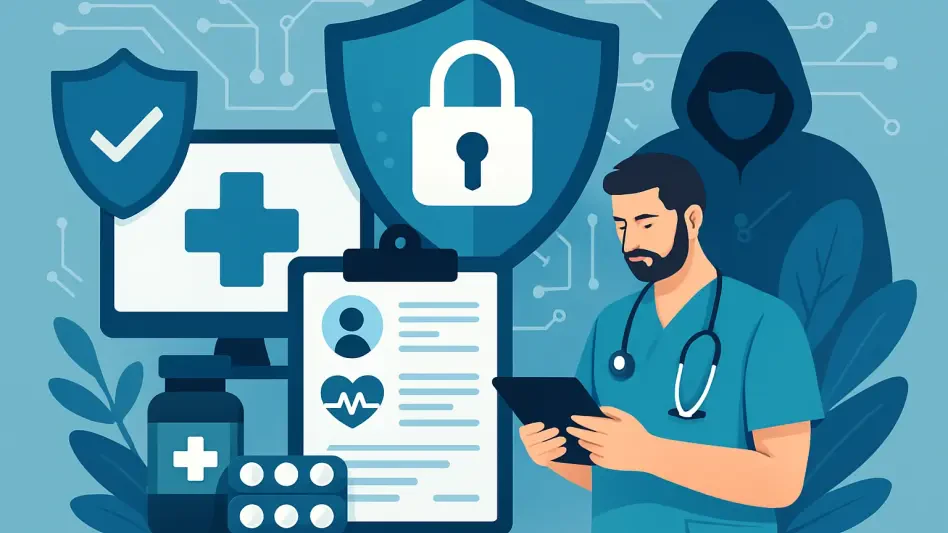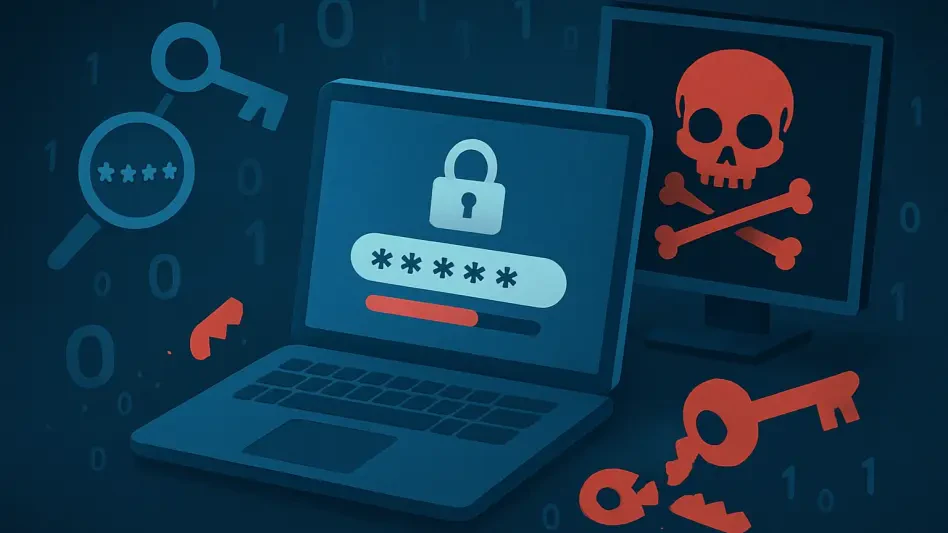In today’s digital age, the security of organizational networks hinges on effective vulnerability management. With the rise in cyber threats, particularly those exploiting software vulnerabilities, timely software patching has become more critical than ever. This article explores the importance of vulnerability management and provides actionable strategies for organizations to stay secure. As technology evolves and cybercriminals become more sophisticated, it is essential for organizations to minimize their attack surfaces by effectively managing vulnerabilities and staying agile in an ever-changing threat landscape.
The Rising Threat of Vulnerability Exploitation
Vulnerability exploitation by cybercriminals is not a new phenomenon, but its prevalence is alarmingly increasing. Data from 2023 shows a three-fold rise in data breaches due to vulnerability exploitation. Cybercriminals frequently use security loopholes to initiate ransomware attacks, making it one of their top three methods. This surge in threats is compounded by the growing number of Common Vulnerabilities and Exposures (CVEs) reported annually, leaving organizations struggling to manage these risks effectively.
Several factors contribute to the persistent problem of software vulnerabilities. Accelerated software development and updates, the adoption of new tools with third-party components, and a focus on speed over security in coding practices all play a role. These practices often introduce bugs into production code, which bad actors can exploit. Additionally, the sheer volume of vulnerabilities being reported makes it difficult for organizations to keep pace and prioritize which issues to address first. This overwhelming number of vulnerabilities results in a greater attack surface for cybercriminals, who are continuously seeking new ways to infiltrate systems.
One noteworthy aspect of this growing threat is that it is no longer limited to isolated incidents or specific industries. Vulnerabilities are being exploited across various sectors, affecting organizations of all sizes and types. This widespread exploitation highlights the need for robust vulnerability management strategies that can be adapted to different organizational contexts. As attackers become more adept at finding and exploiting weaknesses, it is crucial for organizations to stay ahead of the curve and adopt proactive measures to safeguard their systems.
The Role of Ethical Researchers and Commercial Spyware Vendors
Ethical researchers, supported by bug bounty programs from organizations like the Pentagon and Meta, are discovering and responsibly disclosing vulnerabilities. While vendors may patch these vulnerabilities, customers who do not apply these patches remain exposed. Furthermore, many organizations may struggle with the logistical challenges of applying patches in a timely and efficient manner, especially if they lack sufficient resources or face complex IT environments that complicate the process. This delay can leave systems vulnerable and provide opportunities for threat actors to strike.
Additionally, commercial spyware vendors operate in a legal grey area, selling malware and exploits to clients such as autocratic governments. These entities often use sophisticated and clandestine tactics to gain access to sensitive information, posing significant risks to national security and individual privacy. The UK’s National Cyber Security Centre (NCSC) estimates that the commercial “cyber-intrusion sector” doubles every ten years, highlighting the severity of the threat. This trend indicates an increasing market for offensive cyber capabilities, which can be leveraged by both state and non-state actors to carry out targeted attacks.
The professionalization of the cybercrime supply chain adds another layer of complexity to the vulnerability landscape. Initial Access Brokers (IABs) focus exclusively on breaching victim organizations, often through exploiting vulnerabilities. A 2023 report noted a 45% increase in IAB presence on cybercrime forums and a doubling of dark web advertisements for IAB services compared to the previous year. This sophisticated ecosystem of cybercriminals and vendors creates a thriving underground market for tools and services that facilitate exploitation. As a result, organizations must contend with a coordinated and resourceful adversary that is constantly evolving.
Common and Emerging Vulnerabilities
The vulnerability landscape features a mix of familiar and new threats. Common vulnerabilities like cross-site scripting, SQL injection, code injection, and cross-site request forgery (CSRF) remain prevalent. These vulnerabilities are well-known to cyber defenders and can be mitigated through enhanced DevSecOps practices and improved system hardening. The familiarity of these weaknesses allows organizations to draw from established best practices and leverage existing knowledge to defend against such threats effectively.
However, more concerning trends are emerging. For instance, many top vulnerabilities in 2023 were initially exploited as zero-days, meaning no patches were available at the time of exploitation. This situation forced organizations to adopt alternative protective measures while waiting for appropriate patches to be developed and distributed. Additionally, bugs with low complexity and minimal or no user interaction, such as zero-click exploits used by commercial spyware vendors, are becoming more common. These types of vulnerabilities are particularly dangerous because they require little effort from attackers to exploit and can have severe consequences if left unaddressed.
Another alarming trend is the growing sophistication of attacks on specific types of software and systems. Attackers are increasingly focusing on high-value targets that can yield significant returns or cause substantial disruptions. The rise of advanced persistent threats (APTs) and nation-state actors underscores the need for organizations to stay vigilant and continuously enhance their security posture. This ongoing evolution of threats necessitates a dynamic and adaptive approach to vulnerability management, as static or reactive defenses are unlikely to be effective in the face of rapidly changing attack methods.
Targeted Attacks on Perimeter-Based Products
Perimeter-based product vulnerabilities are increasingly targeted by attackers. These products, which include file transfer applications, firewalls, VPNs, and mobile device management (MDM) offerings, often lack robust security by design. Their subpar logging capabilities make forensic investigations difficult, providing perfect entry points into networks with high-end detective capabilities on client devices. As attackers focus their efforts on these perimeter-based products, organizations must take proactive steps to bolster the security of these critical components and improve their overall resilience.
Several factors exacerbate these challenges for defenders. The speed of exploitation has dramatically decreased, with the average time-to-exploit dropping from 32 days to just five days in 2023. This accelerated pace means that organizations have significantly less time to detect and respond to security breaches. The reduction in time-to-exploit underscores the importance of rapid vulnerability identification and remediation, as even brief windows of exposure can lead to devastating consequences.
The complexity of modern enterprise IT and OT/IoT systems, spanning hybrid and multi-cloud environments, further complicates the patching process. Organizations often grapple with siloed legacy technology, which can hinder their ability to detect and address vulnerabilities promptly. Poor quality patches and confusing vendor communications can also impede defenders’ efforts, leading to duplicative work and incomplete risk assessments. Additionally, a backlog in the National Institute of Standards and Technology’s (NIST) National Vulnerability Database (NVD) has left many organizations without timely access to critical vulnerability information.
In light of these challenges, organizations must adopt a disciplined and methodical approach to vulnerability management. This includes prioritizing the protection of perimeter-based products and ensuring that security patches are applied consistently and promptly. By addressing these vulnerabilities head-on, organizations can mitigate the risk of exploitation and strengthen their overall security posture.
Effective Vulnerability and Patch Management Strategies
Given the overwhelming volume of monthly CVE publications, expecting enterprise IT and security teams to patch all vulnerabilities is impractical. A rational approach involves prioritizing vulnerabilities based on risk appetite and severity. Key characteristics of an effective vulnerability and patch management solution include automated enterprise environment scanning for known CVEs, prioritization by severity to ensure focus on the most critical vulnerabilities, and detailed reporting to identify vulnerable software and assets, relevant CVEs, and patches. Flexibility in asset selection for patching based on enterprise needs and providing both automated and manual patching options also plays a vital role.
For zero-day threats, advanced threat detection mechanisms are recommended. These systems should automatically unpack and scan possible exploits, executing in cloud-based sandboxes to assess maliciousness. Machine learning algorithms can help identify new threats accurately, block them automatically, and provide status reports for each sample. Additionally, utilizing threat intelligence feeds can provide organizations with valuable context and insights into emerging threats, enabling them to stay ahead of adversaries and take preemptive action to protect their networks.
Effective vulnerability and patch management also require strong coordination and collaboration among various stakeholders within an organization. This includes IT, security, and development teams working together to establish processes and protocols that support timely and efficient patching. By fostering a culture of collaboration and continuous improvement, organizations can ensure that vulnerability management efforts are aligned with broader business objectives and contribute to overall resilience.
Additional Strategies to Bolster Vulnerability Management
In our modern, digital world, the security of an organization’s network depends largely on effective vulnerability management. With the alarming increase in cyber threats, many of which target software vulnerabilities, the need for timely software patching has never been more crucial. Cybercriminals are constantly devising new methods to exploit weaknesses within systems, making it imperative for organizations to stay ahead of these threats.
Effective vulnerability management involves identifying, evaluating, treating, and reporting on security vulnerabilities in a systematic way. This can significantly reduce the risk of a cyber attack. An essential part of this process is patch management – the timely update of software to fix known vulnerabilities before they can be exploited by malicious actors.
Organizations must adopt a proactive approach to vulnerability management, which includes regular network scans, continuous monitoring, and immediate remediation of discovered vulnerabilities. Additionally, educating employees about security best practices can help prevent human errors that could lead to breaches. By doing so, organizations can significantly reduce their attack surfaces, even as technology advances and cybercriminals’ techniques become more sophisticated.
Ultimately, staying agile and responsive to the evolving threat landscape enables organizations to maintain stronger defenses, protecting their valuable data and resources.







